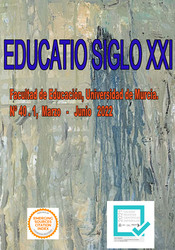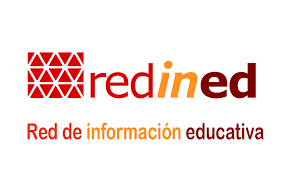Factors associated with face-to-face educational disruption by COVID-19: Higher education students’ opinions towards virtual education.
Abstract
This research was carried out during the suspension of face-to-face classes due to SARS-CoV-2. Objectives: to identify the factors associated with the problems faced by learners to continue their studies on-line, and to measure the student’s predisposition to this new way of learning. In the study, 51 students were surveyed, 2x2 tables were made to determine the risk (OR), and chi square (X2) and Fisher's exact tests were conducted. A Likert scale was used to assess students’ opinions and perspectives on their educational environment. In the multivariate analysis the factors associated with the problems to continue studying online were: not having devices for their classes; bad or very bad communication with their teachers; working online was considered from ordinary to very bad; not enough progress in the contents; having three or more family members studying; and the actions taken by the university in the face of the pandemic were held to be ordinary or very bad. The Fisher's exact test revealed that female students were faced with more problems to communicate with teachers and to continue with their studies. On the Likert scale, the lack of student-teacher communication was the worst evaluated aspect. Poor student-teacher communication, especially as perceived by female students, is not exclusive of this study and coincides with previous research in which lack of technological tools, connectivity and institutional care are also widely mentioned factors. The effect of the factors associated with the problems to continue studying can be summarized as follows: improving the communication and empathy of the teaching staff in view of the socio-economic context of their students
In this work, 51 students (35 women and 16 men) were surveyed. Using SPSS v.25 statistical software, 2 X 2 tables were made to determine the risk (OR), the statistical significance of chi square (X2) with p values <.05 (Fisher's exact test). In the results, it was found that one in five students has difficulties with connectivity to the internet network and 21.5% (11/51) reported having problems to continue their studies due to the deficiency of their own computer equipment; effective communication with their teachers; the new form of virtual work; progress in the contents of the learning units; have more than 3 family members studying and, the actions of the university against COVID-19.
In the second part of the study, the Likert-type scale was used to assess five clusters: 1) student-teacher communication, 2) satisfaction with the final result, 3) the attention received from teachers, 4) the grade obtained with the development of their academic activities and 5) the way of evaluating learning.
Downloads
-
Abstract1657
-
PDF (Español (España))1193
References
Aparicio Llanos, A. (2009). Las TIC y la pandemia de influenza: Desafío para la Salud Pública. Rev. costarric. salud pública 18 (1).
Arroyo, J. (11 de marzo de 2020). Coronavirus: la OMS declara la pandemia a nivel mundial por Covid-19. Redacción Médica.
Begoña Tellería, M. (2004). Educación y nuevas tecnologías. Educación a Distancia y Educación Virtual. Revista de Teoría y Didáctica de las Ciencias Sociales (9), 209-222.
Comisión Nacional de los Salarios Mínimos. (23 de junio de 2020). Apoya Gobierno de México a menores jornaleros agrícolas con programas de Bienestar BOLETÍN No. 12/2020. Obtenido de https://www.gob.mx/conasami/prensa/apoya-gobierno-de-mexico-a-menores-jornaleros-agricolas-con-programas-de-bienestar
CONEVAL. (2019). Comiunicado de prensa No.10. Ciudad de México.
Diario Oficial de la Federación. (2020a). ACUERDO número 02/03/20. Ciudad de México obtenido de: https://www.dof.gob.mx/nota_detalle.php?codigo=5589479&fecha=16/03/2020.
Diario Oficial de la Federación. (2020b). ACUERDO por el que se modifica el similar por el que se establecen acciones extraordinarias para atender la emergencia sanitaria generada por el virus SARS-CoV2. Ciudad de México. obtenido de: https://www.dof.gob.mx/nota_detalle.php?codigo=5592067&fecha=21/04/2020.
Díaz-Barriga, A. (2020). La escuela ausente, la necesidad de replantear su significado. En I. d. la, Educación y pandemia. Una visión académica (págs. 19-29). Ciudad de México: UNAM obtenido de: http://www.iisue.unam.mx/nosotros/covid/educacion-y-pandemia.
Hernández Sampieri, R., Fernández Collado, C., & Baptista Lucio, P. (2007). Metodología de la Investigación. México: McGraw Hill.
Hodges, C., Moore, S., Lockee, B., Trust, T., & Bond, A. (2020). The difference between emergency remote teaching and online learning. Educause Review. Recuperado de https://bit.ly/3b0Nzx7.
Hurtado Talavera, F. J. (2020). La educación en tiempos de pandemia: Los desafios de la escuela del siglo XXI. Revista arbitrada del Centro de Investigació y Estudios Gerenciales, 176-187.
NEGI. (2019). COMUNICADO DE PRENSA NÚM. 252/19 obtenido de: https://www.inegi.org.mx/programas/dutih/2018/.
International Labour Organization. (june de 2020). COVID-19 and the education sector. Obtenido de https://www.ilo.org/wcmsp5/groups/public/---ed_dialogue/---sector/documents/briefingnote/wcms_742025.pdf
Morin, E. (1999). Los siete saberes necesarios para la educación del futuro. Paris: UNESCO.
Naranjo Pereira, M. L. (2009). Una revisión teórica sobre el estrés y algunos aspectos relevantes de éste. Educación 33(2), 171-190.
OMS. (2020). Coronavirus disease (COVID-19) Situation Report – 156 obtenido de:. Obtenido de https://www.who.int/docs/default-source/coronaviruse/situation-reports/20200706-covid-19-sitrep-168.pdf?sfvrsn=7fed5c0b_2
Sanchez Villena, A., & de La Fuente Figuerola, V. (2020). COVID-19; cuarentena, aislamiento, distanciamiento social y confinamiento ¿Son lo mismo? Anales de Pediatría.
Secretaría de Salud. (24 de junio de 2020). Obtenido de https://covid19.sinave.gob.mx/
SEP. (2020). "Presentación de la Nueva Escuela Mexicana en Línea. Desaprendiendo para Aprender". <https://www.youtube.com/watch?v=JzZ2k9pPdfY.consultado el 3 de julio de 2020 (video).
Tu, H., Tu, S., Gao, S., Shao, A., & Sheng, J. (2020). Current epidemiological and clinical features of COVID-19; a global perspective from China. Journal of Infection, 5-16.
UAGro. (2013). Modelo Educativo y Académico. Chilpancingo, Gro.
UNESCO. (19 de junio de 2020). Obtenido de https://en.unesco.org/covid19/educationresponse
Yang, Y., Shang, W., & Rao, X. (2020). Facing the COVID‐19 outbreak: What should we knowand what could we do? J Med Virol 92, 536-537.
Copyright (c) 2022 Servicio de Publicaciones de la Universidad de Murcia

This work is licensed under a Creative Commons Attribution-NonCommercial-NoDerivatives 4.0 International License.
Original work publishes in this journal is subject to the following terms:
1. Murcia University Press (the publishing house) holds the copyright of the publishes work, and favours and allows their reutilization under the use license stated in point 2.
© Servicio de Publicaciones, Universidad de Murcia, 2015
2. Work is published in the electronic edition under a license (Creative Commons Reconocimiento-NoComercial-SinObraDerivada 4.0 España (legal text). They can be copied, used, disseminated, transmitted and publicly presented, as long as: i) authorship and original publication source is acknowledged (journal, publishing house and URL of the work); ii) are not used for commercial purposes; iii) the existence and specifications of this use license is stated.
3. Conditions for self-archive. Authors are allowed and encouraged to disseminate electronically the pre-pint (before review) and/or post-print (accepted for publication) versions of their work before their publication since that favours earlier circulation and dissemination resulting in an increased chance for the authors to be cited and for the work to reach a bigger share of the academic community. Colour: RoMEO: green.








